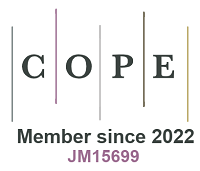Pushing catalysis frontiers with advanced material characterization
Catalysis plays a pivotal role in addressing global challenges related to energy, environment, and chemical production. In the ever-evolving landscape of catalysis research, our ability to design and optimize catalytic systems is intrinsically linked to our capacity to understand their fundamental properties and behaviors. The advent and refinement of sophisticated characterization techniques have revolutionized our approach to studying catalysts across various domains, including thermal catalysis, photocatalysis, and electrocatalysis. Techniques such as nuclear magnetic resonance (NMR) spectroscopy, X-ray absorption spectroscopy (XAS), Raman spectroscopy and Single-particle spectroscopy have emerged as powerful tools, offering unprecedented insights into catalyst structure, active sites, and reaction mechanisms. These methods, often applied in situ or operando, allow us to probe catalysts under working conditions, bridging the gap between idealized models and real-world applications. Moreover, the integration of multiple complementary techniques has enabled a more comprehensive understanding of complex catalytic processes, revealing subtle details that were previously inaccessible. For instance, the combination of XAS with high-resolution electron microscopy has shed light on the dynamic structural changes of catalysts during reactions[1], while the synergy between NMR and computational modeling has elucidated intricate reaction pathways[2]. As we continue to push the boundaries of catalysis science, these advanced characterization methods play an increasingly crucial role in unraveling the mysteries of catalytic phenomena and guiding the rational design of next-generation catalysts.
This Special Issue aims to highlight recent advances in the application of these and other cutting-edge characterization techniques, showcasing their transformative impact on our understanding and development of catalytic systems across diverse fields, from energy conversion and environmental remediation to fine chemical synthesis and beyond. Titanium dioxide (TiO2) is an important type of photocatalyst. A review by Feng et al. discussed the use of solid-state NMR spectroscopy for characterizing TiO2[3]. It highlights the technique’s ability to probe both the structure and dynamics of TiO2 at the atomic-molecular level, providing insights into the electronic structure and properties of TiO2 with different surface features. The review also discusses the characterization of heteroatom active sites in TiO2 photocatalysts and concludes with an assessment of the current limitations and future prospects of solid-state NMR in optimizing and designing advanced TiO2 photocatalysts. Zeolites have been intensively used as catalyst in the production of chemicals and fuels. The work by He et al. reports a study of the structural changes of ZSM-5 zeolites under varying steam conditions by using solid-state NMR, revealing that mild steam leads to silanol condensation without significant dealumination, while severe steam induces dealumination and alters the framework composition and crystallinity[4]. The research also highlights the influence of hydrogen bonding interactions on Brønsted acid sites and proposes a dynamic evolution path for the zeolite framework under different steam conditions. The study conducted by Yang et al. reports that the accessibility of acid sites in HY zeolites, evaluated through dual-beam infrared spectroscopy with probe molecules, significantly impacts light cycle oil conversion and benzene, toluene, and xylene (BTX) yield[5]. Experimental results demonstrate a strong positive correlation between the external surface acidity of the HY zeolites and the ring-opening rate of polycyclic aromatics, leading to increased BTX yields. In a Highlight[6], Lafon et al. showcase the application of advanced solid-state NMR techniques to observe Brønsted acid sites in amorphous silica-alumina (ASA). The existence of Brønsted acid sites in ASA, comparable to those found in conventional acidic zeolites, remains a subject of ongoing debate. This Highlight paper provides a concise overview of the current state of NMR research on various types of acidic protons. The highlighted work demonstrates the significant potential of atomic spatial correlation and internuclear distance measurements in elucidating the precise microstructure of active sites in catalyst. Synchrotron-based X-ray spectroscopic techniques have emerged as powerful tools for probing electrochemical systems at the molecular level. In a perspective, Liu explore the impact of synchrotron-based X-ray spectroscopy on electrochemistry, emphasizing its role in advancing research across classical electrochemistry, electrocatalysis, and spectroscopy[7]. By focusing exclusively on synchrotron techniques, this perspective highlights the unique insights gained from their exceptional brightness and energy tunability. Surface-sensitive enhanced Raman spectroscopy is a vital analytical tool that provides deep insights into molecular interactions and reaction mechanisms, making it essential for advancing materials science. Sun et al. reviewed the significance of surface-sensitive enhanced Raman spectroscopy as a critical characterization technique for understanding the reaction mechanisms of catalysts in the recycling of lithium-ion batteries (LIBs)[8]. By focusing on the interplay between catalysis and LIB recycling, the review highlights how advanced techniques such as Raman spectroscopy can inform the rational design of more effective catalysts. This exploration contributes to the broader goals of sustainability and the repurposing of functional materials. Single-particle spectroscopy is a powerful tool that plays a crucial role in understanding the charge transfer behavior of heterostructured photocatalysts, providing invaluable insights that cannot be obtained through bulk-level characterization. Zhang et al. investigated the enhanced photocatalytic activity of Au/BiVO4 piezoelectric photocatalysts under visible light and ultrasound excitation[9]. Single-particle spectroscopy reveals that high-density dispersed Au nanoparticles promote charge transfer, and the piezoelectric field of BiVO4 further enhances separation of photogenerated carriers. This study provides valuable insights for designing high-performance pollutant treatment catalysts.
The papers presented in this special issue demonstrate the significant advances that have been made in spectroscopic characterization techniques and their application to elucidating the structures of diverse catalytic materials. A variety of emerging trends suggest an exciting future for characterization in catalysis research. There is a growing interest in combining multiple analytical methods to develop more comprehensive understanding of catalytic systems. Integrated multi-technique approaches allow for correlation of structural, compositional and dynamic properties, providing insight into catalysts. Moreover, the integration of machine learning and artificial intelligence is poised to play a pivotal role in catalyst design and catalytic behavior prediction. This will help accelerate the discovery and optimization of novel catalysts.
DECLARATIONS
Authors’ contributions
The author contributed solely to the article.
Availability of data and materials
Not applicable.
Financial support and sponsorship
This work was supported by the National Natural Science Foundation of China (Nos. 22225205, 22320102002, 22127801) and the Strategic Priority Research Program of the Chinese Academy of Sciences (No. XDB0540000).
Conflicts of interest
Xu, J. is the Guest Editor of the Special Issue “Advanced Characterization Techniques and Applications for Catalytic Materials” and Associate Editor of the journal Chemical Synthesis. Xu, J. was not involved in any steps of editorial processing, notably including reviewers’ selection, manuscript handling and decision making. Xu, J. declares that there are no conflicts of interest.
Ethical approval and consent to participate
Not applicable.
Consent for publication
Not applicable.
Copyright
© The Author(s) 2025.
REFERENCES
1. Sarma, B. B.; Maurer, F.; Doronkin, D. E.; Grunwaldt, J. D. Design of single-atom catalysts and tracking their fate using Operando and advanced X-ray spectroscopic tools. Chem. Rev. 2023, 123, 379-444.
2. Wang, C.; Chu, Y.; Xiong, D.; et al. Water-induced micro-hydrophobic effect regulates benzene methylation in Zeolite. Angew. Chem. Int. Ed. Engl. 2024, 63, e202313974.
3. Feng, N.; Xu, J.; Deng, F. Solid-state NMR of active sites in TiO2 photocatalysis: a critical review. Chem. Synth. 2024, 4, 43.
4. He, L. H.; Li, J. J.; Han, S. Y.; et al. Dynamic evolution of HZSM-5 zeolite framework under steam treatment. Chem. Synth. 2024, 4, 1.
5. Yang, P.; Yan, S.; He, N.; et al. The effect of accessibility to acid sites in Y zeolites on ring opening reaction in light cycle oil hydrocracking. Chem. Synth. 2025, 5, 24.
6. Lafon, O. A focus on the observation of bridging SiOHAl Brønsted acid sites in amorphous silica-alumina. Chem. Synth. 2025, 5, 23.
7. Liu, W. Shining light on electrochemistry: a synchrotron-based X-ray spectroscopic interrogation. Chem. Synth. 2024, 4, 13.
8. Sun, H. L.; Xu, Y. P.; Ding, L.; Gu, Y.; Li, J. F. Recycling valuable materials from the spent lithium ion batteries to catalysts: methods, applications, and characterization. Chem. Synth. 2024, 4, 23.
Cite This Article
How to Cite
Download Citation
Export Citation File:
Type of Import
Tips on Downloading Citation
Citation Manager File Format
Type of Import
Direct Import: When the Direct Import option is selected (the default state), a dialogue box will give you the option to Save or Open the downloaded citation data. Choosing Open will either launch your citation manager or give you a choice of applications with which to use the metadata. The Save option saves the file locally for later use.
Indirect Import: When the Indirect Import option is selected, the metadata is displayed and may be copied and pasted as needed.
About This Article
Special Issue
Copyright
Data & Comments
Data
















Comments
Comments must be written in English. Spam, offensive content, impersonation, and private information will not be permitted. If any comment is reported and identified as inappropriate content by OAE staff, the comment will be removed without notice. If you have any queries or need any help, please contact us at [email protected].